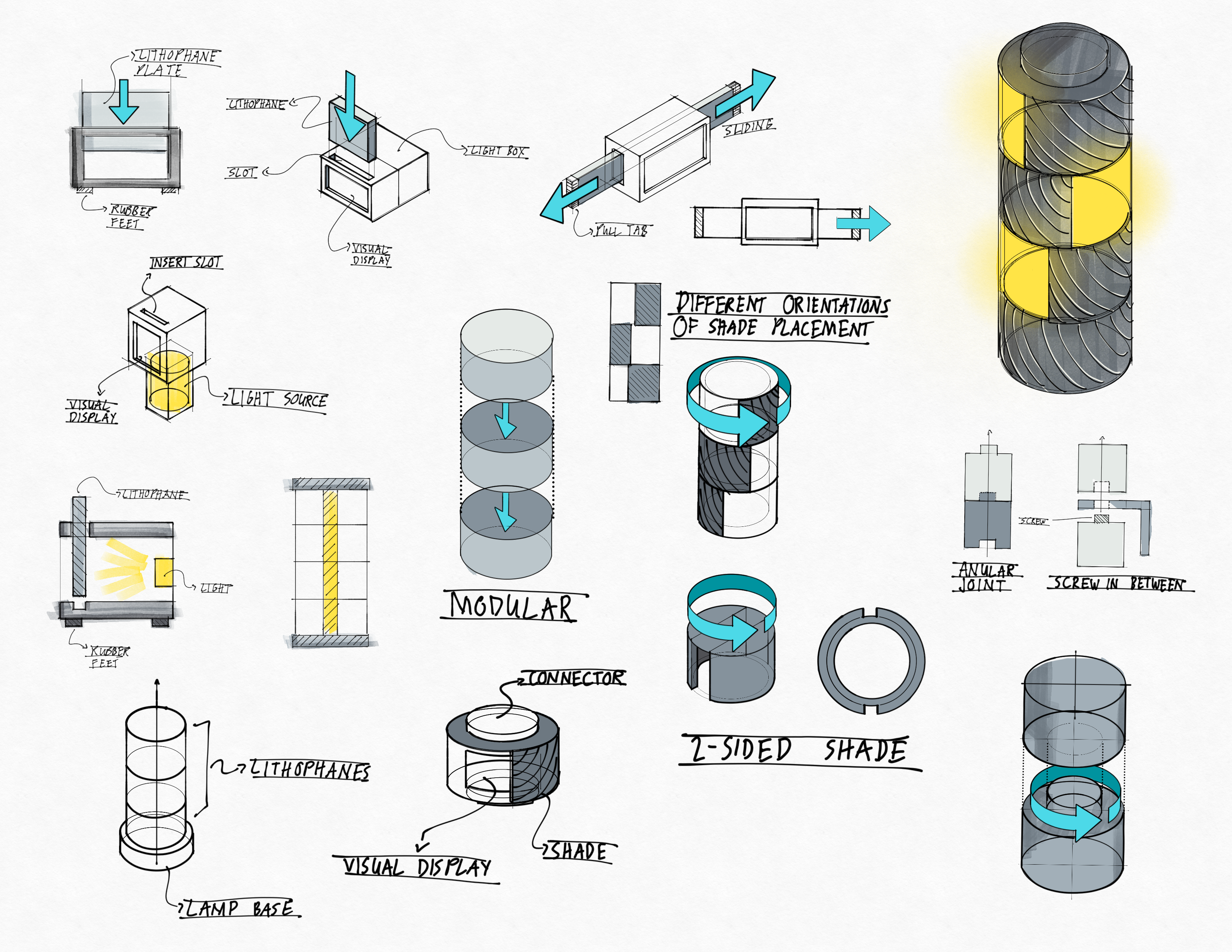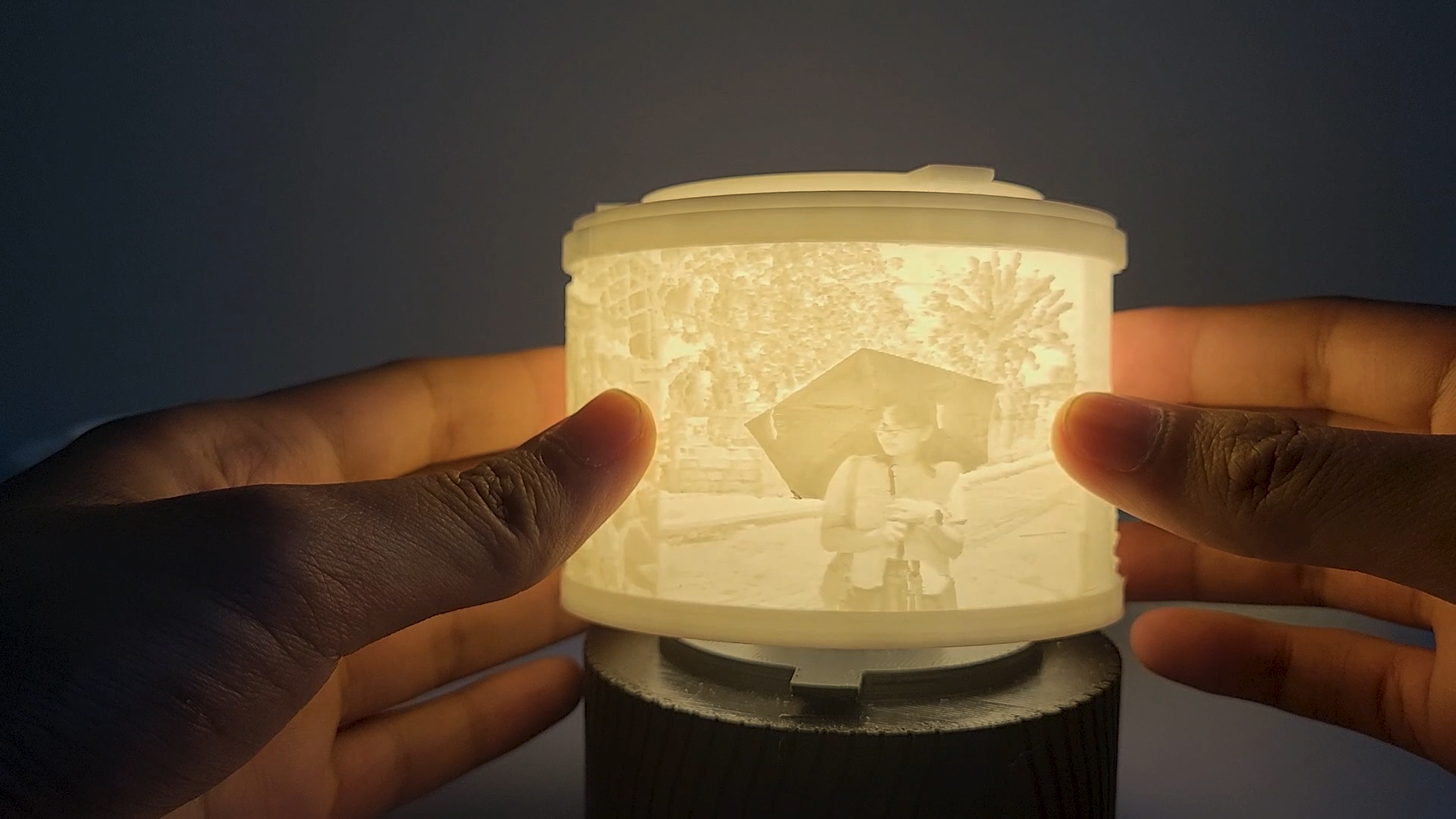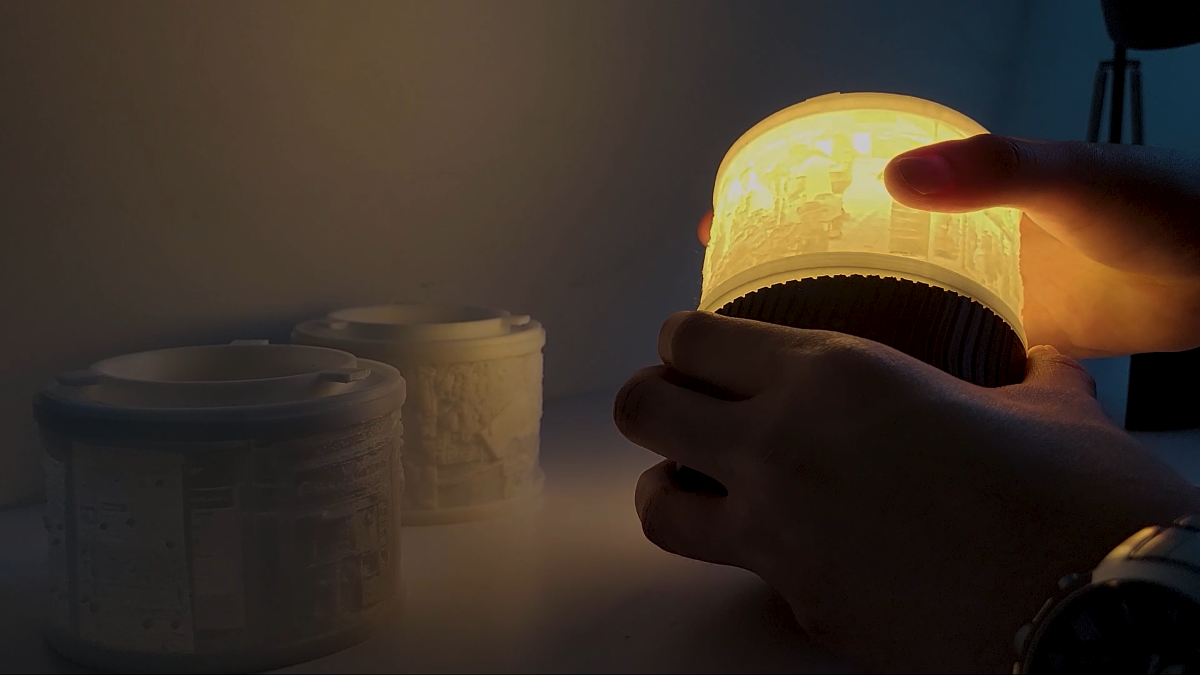DIGITAL FABIRCATION • DISCURSIVE DESIGN • LIGHTING • RESEARCH-CREATION
Tales of Moments
This project shows the culmination of my Master’s research findings through a modular lithophane lamp comprised of everyday scenarios in two very different contexts. It showcases Filipino and Vancouver contexts through everyday interactions with people and objects, contextualizing the cultural affordances that are specific to those contexts.
Role: Industrial Designer, Researcher
Type: Final Outcome for Master's Thesis Exhibition
Year: 2024
Overview
This project shows the WHY of my Master’s thesis research. I wanted to elaborate on the differences and similarities in interactions I have observed in Vancouver to that found in the Philippines. It is not only visual, but also interactive for people to have a sense of how it would physically feel to embody the action of covering and uncovering specific mental models of interaction and association depending on what context you are in.
The lithophane lamp showcases the cultural differences in everyday interactions and the constant negotiation between learned behaviors. Its modular design represents the process of "unlearning" and "relearning" social norms shaped by our environment. Each layer, symbolized by the shade, highlights a choice of which aspects of our past experiences we bring forward in different contexts.
Cultural Affordances
Objects that live in the mundane of the everyday life are embedded with culture that we might not even be aware of.
The everyday objects we interact with passively and unnoticed represent the culture of a specific niche. This was the case with looking at and comparing the mechanisms used on door hooks at the very beginning of the research that represent how in Vancouver there is a temporary housing culture where people do not stay in a household for a very long time unlike in the Philippines where it becomes a permanent fixture not only in the immediate family but also for extended and atomic families’ next of kin as well. It isn’t until we view our own practices through an outsider’s lens that we truly notice and appreciate this ingrained cultural specificity in our interactions both with other people as well as the objects around us.
Research Insights
Unlearning and Relearning
This concept stems from my own experience transitioning from the Philippines to Vancouver. Initially, I had to adapt my Filipino "mental models" for social interaction to Canadian customs. The shade signifies this conscious selection of cultural behaviors based on social cues and surroundings. This learning process became evident when encountering various customs and norms that operate differently than those in the Philippines.
Experience as a Collection of Moments
The lamp's modularity reflects how past experiences remain ingrained. Though dormant, the mental models and associations with cultural norms (affordances) can resurface. Each new moment, past or present, adds another layer, shaping the ever-evolving tapestry of one's identity.
Despite actively adapting, our cultural background remains ingrained. These behaviors resurface when appropriate, and in multicultural environments, we can even blend them to create richer experiences. The lamp's ability to be assembled and disassembled reflects this flexibility in drawing upon diverse perspectives.
Unveiling the Layers of Identity
Cultural and personal identities can be uncovered and observed through our interactions with things, depending on how we interact, with who, and what. There is beauty that often goes unnoticed in our everyday living where culture is ingrained in the things we passively interact with. It is not until we become foreigners looking back at our own cultures do we realize the impact and value a certain interaction with an object or place has on our cultural identity.
Everyday Objects: Embodied Culture
The lamp emphasizes the cultural influence embedded in seemingly mundane objects. Everyday items hold unspoken cultural codes that shape our interactions. For instance, door hooks in Vancouver suggest a more transient housing culture compared to the Philippines, where they often serve extended families for generations. Recognizing these cultural specificities often requires an outsider's perspective, prompting a deeper appreciation for the nuances woven into our daily lives.

© Erik Asia 2025. All rights reserved.





